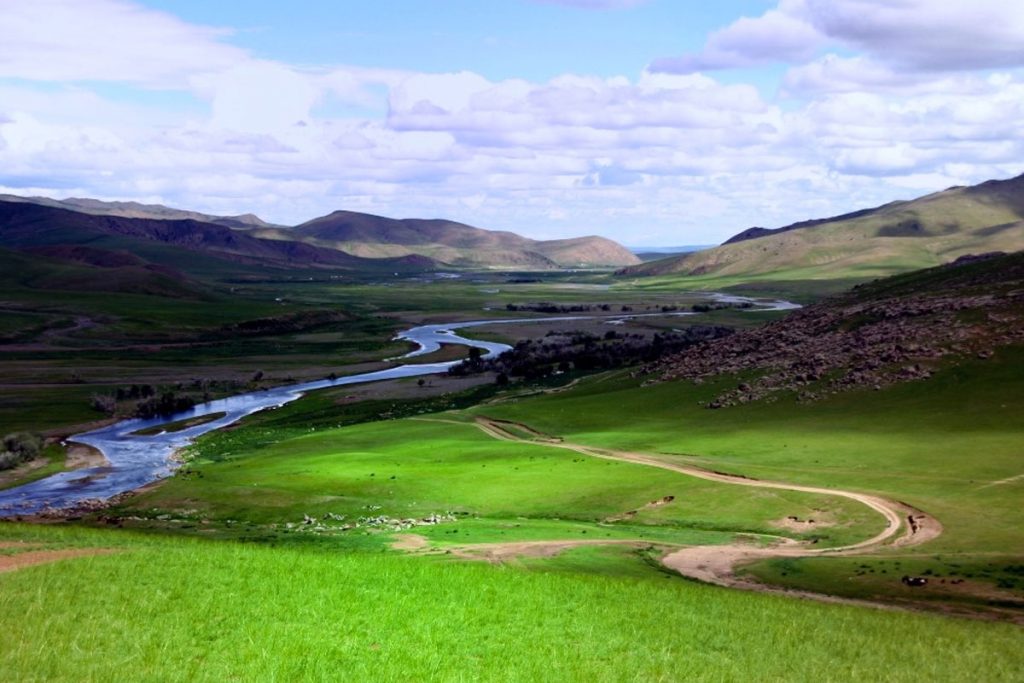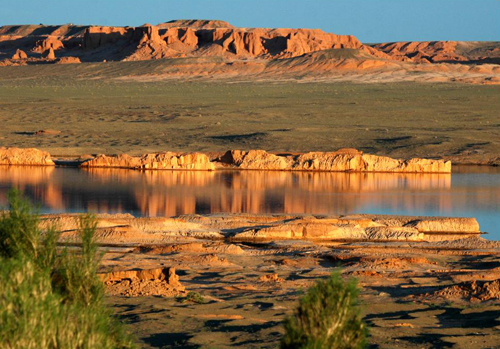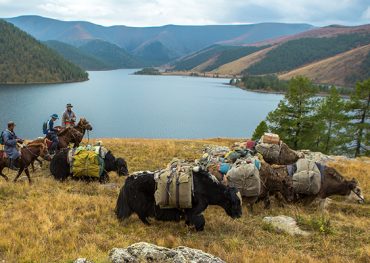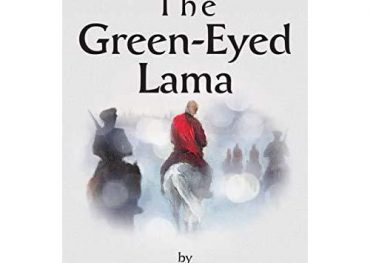Embark on a unique and authentic adventure in the heart of Mongolia!
Sit comfortably between the two humps of a camel through the first part of this extraordinary triathlon in the little Gobi in the center. Then connect the desert to the green valleys on foot, before ending with a memorable ride in the steppes.
<p>As you arrive at the Chinggis Khaan international airport in Ulaanbaatar, the capital city of Mongolia, your guide-interpreter and driver will welcome you at the airport and lead you on to the city tour. The capital has plenty to offer. On the tour you will visit the Gandan Monastery, a historical and spiritual Buddhist temple in the city. Then you can walk around the National History Museum and the Chinggis Khaan Square in front of the Mongolian Parliament house to help you get a general knowledge and information about the Mongolian history and culture.</p><p>FB, Night in “White House” tourist hotel</p>
<p>With your guide and driver in a private vehicle, you will leave the capital and ride to the “Khogno Khan”, called the Central Gobi, one of the 33 “Gobi” (a local word for “Desert”) in Mongolia. On the way you visit a nomadic family, settled in the middle of the pastures. Upon visit, you can have a taste of “White food” and notably Airag, a traditional drink made from fermented mare’s milk. The “white foods” derived from milk occupy a very important place in the diet of the Mongols, as well as symbolically and ritually.</p><p>One of your next destinations is an ancient Buddhist monastery in the mountain and ruins of Ovgon temples. The Erdene Khamba monastery, located in the sacred Mountain Khogno Khan, was rebuilt in the 1990s after being destroyed during the Soviet purges. Today there are only the ruins and 3 small temples left. The monastery had two sections: the lower one called the Zaluu Khiid and the upper one called the Ovgon Khiid. The Ovgon Khiid (meaning “Old temple”) was destroyed during middle age feuds between western and eastern Mongolians after the collapse of the Mongol Empire. </p><p>On the next day, you will have a full day camel ride on the edge of the sand dunes.</p><p>FB, Overnight with a nomadic family</p>
<p>With your team you will leave by 4×4 towards Nomgon bag (30 km), a small territory of administrative unit of the Arkhangai province. This is where your 4 days of trekking to village Khashaat starts.</p><p>For the next 4 days you will be hiking in the plains and steppes connecting Khogno Khan to Karakorum, passing the Nart and Bukht mountains, the village of Khashaat and finally going up the Orkhon for the latter two days. </p><p>FB, Overnight in tent</p>
<p>You will be walking towards Khoshoo Tsaidam, passing the former wheat field used by the village people (Journey: 25 km / 7h, on foot, with assistance vehicle by)</p><p>FB, Overnight in tent</p>
<p>On this day you start with a tour of the Turkish history museum, full of ancient artefacts and a dedicated memorial of Bileg Khan in the Khoshoo Tsaidam. Then the rest of the day you will be hiking toward Lun Mountain</p><p>FB, Overnight in tent</p>
<p>This will be the last day of your trekking. Crossing the Old Orkhon River, you continue and arrive to your destination, the Karakorum city.</p><p>FB, Overnight in "Munkh Tenger" yurt camp</p>
<p>Early in the morning, you will start the tour of Karakorum, the ancient capital of the Mongol Empire during the time of Chinggis Khaan (1162-1227). The current city of Karakorum is above all the seat of the best-known monastery in Mongolian territory: Erdene Zuu. Now it is a small town in the middle of the grasslands. There are some remains of the city scattered to see around. However, most stones of the old buildings were later used to build the nearby “Erdene Zuu” Monastery. Erdene Zuu means’ hundred treasures. The building dates from 1586 and once consisted of more than a hundred temples. Sadly, the complex has been subjected to many political ups and downs, at last being actively restored since 1990 around twenty remain today. It is one of the cultural and spiritual highlights in Mongolia. The complex is fully fenced and every fifteen meters there are stupas, 108 in total, in the walls.</p><p>Continuing, your team will drive towards the Orkhon Valley, inscribed by UNESCO as a World Heritage (one of a few in Mongolia) as representing evolution of nomadic pastoral traditions spanning more than two millennia.</p><p>At the end of the day, you will arrive at the “URSA MAJOR” geolodge camp, located on the valley. At night, when the sky is clear, you can stargaze by MEADE LX-200, the most powerful telescope in Mongolia. You can observe the stars, planets and galaxies from the steppes of the Orkhon Valley... </p><p>FB, Overnight in yurt at “URSA MAJOR” geolodge</p>
<p>Horse riding in the paradise for Yak herders! The next two days you will horseback ride in the valley, surrounded by nomads. The beauty of the natural site consists not only of green plains and hills bursting with basalt lines extending on both sides of the Orkhon River, but also of deer steles, hirgesuur (tombs in cairn), tombs with slabs, anthropomorphic and zoomorphic statues, ruins of ancient capitals.</p><p>You will also ride in the direction of the Orkhon waterfall, located in the heart of the valley. Strangely the waterfall has water only after rain or showers, but getting there allows you to pace around the beautiful area. At about fifteen meters high, it offers a nice walk along the banks of the river and, after a difficult descent, at the bottom of canyon! </p><p>Before noon: 3 hours of horse riding</p><p>Afternoon: 3 hours of horse riding </p><p>FB, Nights in tent</p>
<p>After breakfast in the open air, your team will depart in a 4 × 4 towards the Khangai Mountain for the hot springs of Tsenkher. When you arrive at the hot springs, you will be able to settle in the yurt camp and take advantage of the pool filled with hot springs after 2 days of riding a horse. </p><p>FB, Overnight in “Shiveet Mankhan” yurt camp</p>
<p>Continuing your trip, you will depart Ogii freshwater lake, which attracts anglers and bird watchers from everywhere. The Lake Ogii is part of the RAMSAR conventions (spaces that include wetlands of great importance for their richness in avifauna). Along your route in the middle of endless steppes, you will be able to meet families of nomads who greet you. When you arrive, you can walk around the lake and observe the birds that migrated to the area around late April and habit there – cranes and ducks, to name just a few species. Swan Goose, White Spoonbill and Dalmatian Pelican have been recorded before!</p><p>FB, Overnight in “Khatan Ogii” yurt camp</p>
<p>After breakfast, the drive to the Khustai Mountains starts. You will be heading to the natural reserve of Khustai National Park, known for its famous Przewalski horses, called Takhi in Mongolian. These small “prehistoric” horses have been featured in cave paintings that go back more than 15 000 years and can be found in the Lascaux caves! These horses disappeared naturally in the 1960s, but were reintroduced to Mongolia through zoos from different countries. Since the arrival of twenty wild horses in 1992, the population has increased to about 300!</p><p>Upon your arrival at the natural reserve you can visit the National Park information center and get more history about the area. </p><p>In the afternoon, you will be able to observe the wild horses as they descend from the mountains. There are many other species of protected animals in the park: the red deer, Siberian roe deer, wild boars, Mongolian gazelle, gray wolf, Pallas's cat, Eurasian lynx and many more.</p><p>FB, Overnight in “Khustai” yurt camp</p>
<p>After breakfast you return to the capital Ulaanbaatar and arrive at your hotel. Take this time to have a little rest, then you’ll go shopping in the State Department Store, the largest shopping mall in Mongolia, a leftover of the Soviet occupation. There, you can find cashmere, leather, and whatever you want for souvenirs, presents and gifts. </p><p>In the evening you’ll indulge in Mongolian culture with a folklore show, concert of traditional music and contortion. You’ll hear performances with the Traditional Mongolian instrument Morin Khuur, a two-string fiddle adorned with a carved horse’s head; overtone singing, previously only used by shamans to enter into communication with the spirits.</p><p>At last, a farewell dinner with your team to wrap up an excellent journey full of memories.</p><p>FB, Night in “White House” tourist hotel</p>
<p>After having breakfast in the hotel, your team will drive you to the “Chinggis Khaan” international airport 2 hours before your departure.</p><p></p><p>Have a safe journey back!</p>












